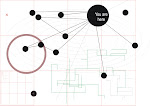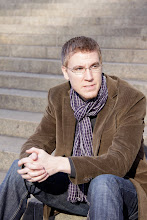UND historian puts archeology on high-tech fast track in Cyprus research project
University of North Dakota historian William “Bill” Caraher returned recently from another successful season of archeology on the island nation of Cyprus.
“We finished our seventh season of fieldwork in the coastal zone of Pyla Village near Larnaka,” said Caraher, the multidisciplinary team’s leader and high technology guru. “This was our second season of excavation and the largest and most complex to date with over 30 students—including three UND graduate students—and colleagues from the United States, Canada, the United Kingdom, and Cyprus.”
Since 2003, the Pyla Koutsopetria Archeologic Program (PKAP) team has worked under Caraher’s direction; the team includes R. Scott Moore from the Indiana University of Pennsylvania and David K. Pettegrew of Messiah College.
PKAP background
The goal of the PKAP project: find out how folks lived, worshipped, and did business from the Late Bronze Age to the end of the Roman Empire, a period spanning 1200 B.C. to 700 A.D. The project also trains students how to do field research in a traditional discipline like history with high-tech applications ranging from relational databases to global positioning system (GPS) gear and ground-penetrating radar.
The Pyla-Koutsopetria research area—now part of a British military base—was a harbor and commercial area throughout antiquity, Caraher said.
The goal of the PKAP fieldwork is to collect data without disturbing the archaeological remains protected beneath the surface. The results include the discovery of what may be a previously unknown ancient shrine and an extensive Roman settlement, all from periods dating as far back as 600 B.C., Caraher said.
The seven seasons of PKAP fieldwork have revealed a dynamic and wealthy Mediterranean landscape filled with towns, fortifications and religious centers. The careful documentation of this material is particularly important as more of the Cypriot coastline is developed.
Summer 2009
PKAP researchers this summer used intensive survey, remote sensing, and excavation to document this rich archaeological landscape. Over a five-week season, the PKAP team opened six trenches on sites at Vigla, Koutsopetria, and Kokkinokremos, Caraher said.
“The trenches on the prominent coastal height of Vigla produced significant evidence of a Greek settlement from around 400 B.C.,” Caraher said. “An imposing fortification wall surrounded domestic quarters whose collapsed mud brick walls sealed valuable ceramic material on the floors.”
These buildings may have been the houses for mercenary forces positioned to protect a vulnerable stretch of coastline near the cosmopolitan city of Kition, or perhaps the homes of local residents who had settled in fortified villages during politically unstable times, Caraher said.
In conjunction with the excavation work, the PKAP team conducted 10 days of geophysical survey with ground penetrating radar in collaboration with Beverly Chiarulli of the Arcaheological Services Laboratory at Indiana University of Pennsylvania, Caraher said.
PKAP in multi-media mode
Finally, the PKAP team continued its commitment to a multi-media approach to archaeological research.
“We were joined in the field by an experienced documentary filmmaker, Ian Ragsdale of Big Ape Productions and Ryan Stander, a photographer in the UND Masters of Fine Arts program,” Caraher said.
“These projects represent an important aspect of reflexive fieldwork, as well as a commitment to public outreach through new media delivered over the Web,” Caraher said.
The newly created UND Working Group in Digital and New Media will contribute to the production of Ragsdale’s documentary and facilitate a digital exhibit of Stander’s photographs.
Various members of the PKAP team blogged regularly on PKAP sponsored blogs, tweeted from the field on a PKAP Twitter feed, and produced a dozen podcasts.
“As one of the first Mediterranean archaeological projects to blog from the field, it has drawn thousands of readers from around the world who have seen this unique perspective on the inner workings of Mediterranean archaeology,” Caraher said.
“It’s really exciting to be involved in this hands-on project with students,” said Caraher, who as tech guru handles a lot of the GPS and geographic information systems (GIS) for the project . “We use these systems intensively to ensure that we leave no area uncharted and to document the location of artifacts.”
Cyprus connection
All of PKAP’s field work was completed with the permission and cooperation of Director of the Cyprus Department of Antiquities Pavlos Flourentzos.
The 2009 season΄s fieldwork was funded by grants from UND, the Institute of Aegean Prehistory, and generous private donors. The team also enjoyed the generous assistance of the Estate Manager of the British Sovereign Area – Dhekelia Garrison, the Larnaka District Archaeological Museum, and the Cyprus American Archaeological Research Institute, Caraher said.







